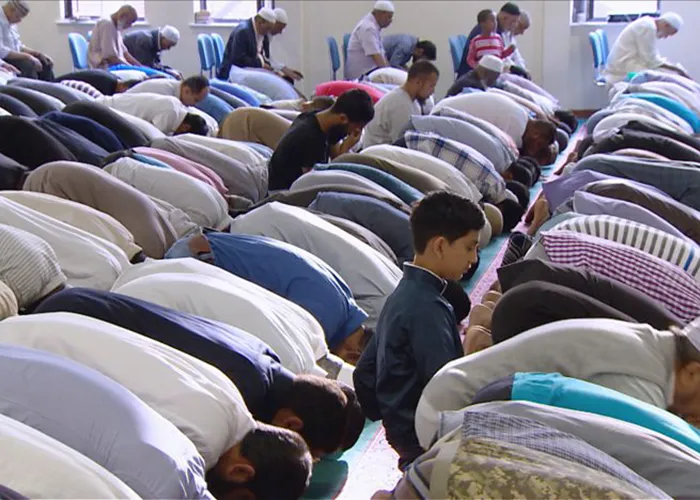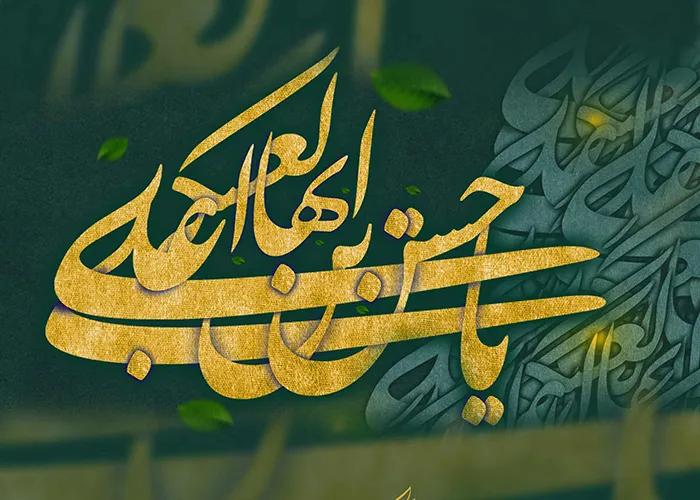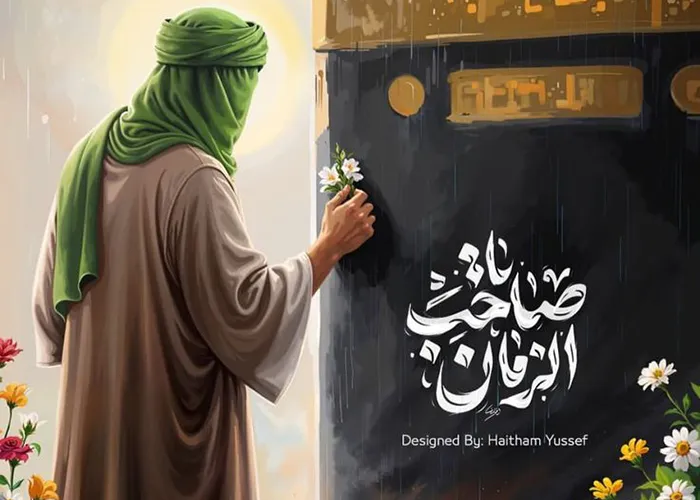Topic of the Week – Volume02 Issue28
Imam al-Sajjad (peace be upon him): A Model of Resistance beyond Limitations
Seyed Hashem Moosavi
Introduction
A precise and comprehensive understanding of the luminous personality of Imam al-Sajjad (peace be upon him) is challenging, primarily due to the unique circumstances of his time. This difficulty does not stem from a lack of outstanding qualities in his life but rather from the historical context that caused much of it to remain shrouded in ambiguity and relative neglect.
These challenges primarily stem from two key factors:
- The Overwhelming Shadow of the Tragedy of Karbala
The eternal and heroic uprising of Imam Husayn (peace be upon him) and the tragedy of Karbala left such a profound and lasting impact on the soul of history that, for a long time, it captured the primary focus of public attention, even among many historians. As a result, the life, character, and multifaceted struggle of Imam al-Sajjad (peace be upon him) remained overshadowed for years. Many who know him merely as “the survivor of Karbala” are unaware of how he carried forward the banner of resistance in a different yet equally profound form.
- Intense Control and the Stifling Oppression of the Umayyads
The Umayyad caliphs, particularly Yazid ibn Mu’awiyah and ‘Abd al-Malik ibn Marwan, fully recognised the spiritual and social influence of Imam al-Sajjad (peace be upon him) and made every effort to restrict him. Through strict surveillance, the imposition of an atmosphere of fear and repression, and systematic distortion of the image of the Ahl al-Bayt (peace be upon them) in public opinion, they created unprecedented restrictions on the expression of truth and the free transmission of authentic Islamic teachings.
Along with other political and social constraints, these two factors contributed to transmitting an incomplete, often distorted image of this noble Imam to the broader community. As a result, the depth of his knowledge, worship, asceticism, political insight, and especially his unique approach to struggle and resistance, has remained hidden from many. Consequently, portraying an accurate and inspiring image of Imam al-Sajjad (peace be upon him) that highlights his exemplary role, particularly in spirituality, intellect, and resistance, has become challenging. Therefore, this image must be reconstructed through a return to authentic Islamic sources and a rational, analytical reading of history.
An Unparalleled Model of Intellect and Spiritual Resistance
Despite the aforementioned challenges and restrictions, the exceptional wisdom and foresight of Imam al-Sajjad (peace be upon him), along with his profound understanding of the sociopolitical climate and his deliberate choice of a unique method of struggle, enabled him to emerge as an unmatched exemplar in the realms of spirituality, intellect, and resistance. Imam al-Sajjad (peace be upon him) demonstrated that resistance is not confined to the battlefield; instead, it can continue in more subtle, profound, and ultimately more impactful forms.
Resistance in Silence: Struggle Through Prayer and Tears
One of Imam al-Sajjad’s (peace be upon him) most remarkable achievements was the design and implementation of a subtle yet profound and enduring form of resistance. By skilfully employing tools such as supplication, weeping, sermons, and the spiritual cultivation of a faithful generation, he laid the foundation for a quiet but deeply rooted struggle against the ideological and political system of the Umayyads.
- A Courageous Sermon in Yazid’s Court: Clarifying the Identity of the Ahl al-Bayt
One of the most brilliant lessons in resistance from the school of Imam al-Sajjad (peace be upon him) is the unwavering propagation of truth under the harshest conditions. In the aftermath of Karbala, while still bearing the wounds of captivity, he delivered a powerful sermon in Yazid’s court in Damascus. This address stands as a striking example of scholarly and enlightening resistance.
In addition to exposing the corrupt nature of the Umayyad regime, the sermon unveiled the actual image of the Ahl al-Bayt (peace be upon them) to the people of Sham, who had long lived under the influence of propagandistic misinformation. Citing verses from the Qur’an and introducing himself and his noble family, the Imam tore away the veil concealing the hideous face of the Umayyads. He revealed the truth to a public misled for years by poisonous propaganda.
In this powerful speech, Imam al-Sajjad (peace be upon him) introduced himself with unwavering courage, saying:
“I am the son of Mecca and Mina. I am the son of Zamzam and Safa. I am the son of the one who lifted the Black Stone with his cloak… I am the son of the best of those ever walking upon the earth… I am the son of the one whose robe was soaked in his blood and whose blessed body was torn apart…”
These striking declarations not only revealed his divine lineage and noble ancestry but also cried out against the injustice and oppression endured by the Ahl al-Bayt (peace be upon them), especially by evoking the martyrdom of Imam Husayn (peace be upon him).
In this sermon, Imam al-Sajjad (peace be upon him) not only affirmed the legitimacy of himself and the Prophet’s family, but also established such awe and moral authority in Yazid’s court that the very platform, originally intended by the regime to humiliate and distort the identity of the Ahl al-Bayt (peace be upon them), was transformed into a podium for introducing them, affirming their Prophetic lineage, and proclaiming their virtues.
This masterful act of rhetorical resistance stands as a rare and powerful media triumph in the history of Shi’ism, one that ultimately forced Yazid to release the captives of Karbala.
- Sahifa al-Sajjadiyya: The Living Qur’an of the People of Resistance
Another remarkable feature of Imam al-Sajjad (peace be upon him) was his innovation and implementation of a unique form of resistance rooted in both intellect and spirituality. Recognising the suffocating political climate of his time, he wisely refrained from direct military confrontation, which was neither feasible nor fruitful under such circumstances.
Instead, he adopted subtle yet effective methods to transmit authentic Islamic teachings, cultivate faithful and conscious individuals, and challenge the dominant ideological and moral corruption. Though seemingly non-political, these approaches had far-reaching cultural, doctrinal, and social impact.
Through such creative and powerful strategies, Imam al-Sajjad (peace be upon him) transformed the severe threats of his era into extraordinary opportunities for lasting reform.
One of these methods was embodied in the profound and meaningful supplications in Sahifa al-Sajjadiyya.
Known as the Psalms of the Household of Muhammad (peace be upon him and his family), Sahifa al-Sajjadiyya is far more than a collection of intimate prayers and invocations. It is a rich compendium filled with deep theological, ethical, political, and social insights, an open-air university that could not be silenced or censored by tyrants.
Through these prayers, Imam al-Sajjad (peace be upon him) was, in reality, educating the Muslim community on lofty Islamic principles, clarifying the actual status of Imamate, exposing the corruption of oppressive rulers, and nurturing a generation of faithful and revolutionary believers.
These supplications served as a powerful indirect medium for religious propagation and the dissemination of Islamic teachings during a time when open preaching was impossible. The Imam (peace be upon him) used these prayers not only as a means of intimate dialogue with God but also as spiritual-social manifestos guiding the faithful through darkness with divine wisdom.
The recitation and teaching of the profound supplications in Sahifa al-Sajjadiyya, an ocean of monotheistic, ethical, social, and political insights, was Imam al-Sajjad’s (peace be upon him) strategic response to the suppression of religious propagation.
At a time when openly preaching the pure teachings of Islam, as conveyed by Prophet Muhammad (peace be upon him and his family), posed a serious threat to one’s life, the Imam turned to the language of supplication and intimate discourse with God to convey the deepest religious truths.
Through these prayers, he revived the spiritual consciousness of a community that had fallen into despair and passivity in the aftermath of Karbala. Sahifa al-Sajjadiyya, by reconnecting hearts to God, kept alive the spirit of hope, reliance on the Divine, and the will to rise and act.
- Weeping and Mourning: Recalling Karbala as a Weapon of Awareness
Another powerful innovation of Imam al-Sajjad (peace be upon him) was his use of mourning and tears as a strategic tool to revive the memory of the Ahl al-Bayt’s (peace be upon them) oppression and preserve the message of Karbala. He transformed moments of sorrow, such as witnessing a lamb being slaughtered or hearing a child cry, into opportunities to recall the tragedy of Karbala and recount the suffering of its martyrs.
His continual weeping for Imam Husayn (peace be upon him) and his companions was far more than an emotional reaction; it was a deliberate act of resistance. His tears were a torch, keeping the memory of Karbala alive in people’s hearts and preventing the great sacrifice of Imam Husayn (peace be upon him) from being buried under the silence imposed by tyranny.
Through this method, Imam al-Sajjad (peace be upon him) turned the Umayyad regime’s attempt to censor the narrative of Karbala into an opportunity for exposure and awakening. His mourning became a means to stir sleeping consciences and transmit the truth in an emotionally powerful, spiritually resonant way.
It is narrated from Imam al-Sadiq (peace be upon him): «بَکَى عَلَى بن الْحُسَیْنِ عشرین سَنَةً، مَا وُضِعَ بین یدیه طَعَامٌ إِلا بَکَى» “‘Ali ibn al-Husayn wept for twenty years. Never was food placed before him without him breaking into tears.”[1]
It is narrated that when Imam al-Sajjad (peace be upon him) was asked, “Has the time not come for your grief to end?”, He replied: “Jacob, the Prophet of God, wept so much over the loss of one son that his eyes turned blind, yet he knew his son was alive. But I saw, before my very eyes, my father, my brothers, my uncles, and my companions all martyred…”[2]
These tears were not tears of helplessness; they were tears of revelation. They represented a form of cultural resistance aimed at awakening generations. By establishing the tradition of mourning and recounting the tragedy of Karbala within private gatherings and homes, Imam al-Sajjad (peace be upon him) ensured that the memory of Ashura would not be erased from the people’s hearts.
Instead, it became a lasting and transformative culture of weeping and mourning that would endure throughout Islamic history as a powerful medium of remembrance, resistance, and spiritual renewal.
Conclusion
In the post-Ashura era, Imam al-Sajjad (peace be upon him) became a timeless role model for generations of believers through his pure intellect, profound spirituality, and revolutionary patience. As a peerless example of a resilient and wise leader, he demonstrated that even under the most severe restrictions and oppression, it is possible, through foresight and the use of spiritual and intellectual tools, to keep the spirit of the Karbala movement alive and plant the seeds of awakening and resistance in the hearts of society.
By choosing a distinct and unprecedented path, he proved that resistance lies in wielding a sword and the power of words, tears, supplication, and education.
Today, in a world where injustice and distortion still prevail, revisiting and reflecting upon the life of Imam al-Sajjad (peace be upon him) offers a vital pathway to a deeper understanding of religion and divine teachings.
Resistance in Prostration and Prayer, Resistance in Tears for the Oppressed, Resistance in Nurturing Righteous Souls, and Resistance in Exposing Injustice with Insightful Words, these are the enduring legacies of Imam Zayn al-‘Ābidīn (peace be upon him). They make him the Imam of the worshippers, the radiant light in nights of darkness, and the guiding figure for wise resisters.
As we read in his Ziyārah: «اَلسَّلامُ عَلَیْکَ یا بَدْرَالدُّجى، اَلسَّلامُ عَلَیْکَ أَیُّهَا الاَوّاهُ الْحَلِیمُ، اَلسَّلامُ عَلَیْکَ أَیُّهَا الصّابِرُ الْحَکِیمُ» “Peace be upon you, O full moon in the dark night. Peace be upon you, O man of supplication and forbearance. Peace be upon you, O patient and wise one.”
Salutations to that embodiment of patience, resistance, and divine wisdom.
[1] . al-Amālī, by Shaykh al-Ṣadūq, Volume 1, Page 204.
[2] . Kāmil al-Ziyārāt, by Ja‘far ibn Muḥammad ibn Qulawayh, Page 213.
editor's pick
news via inbox
Subscribe to the newsletter.




